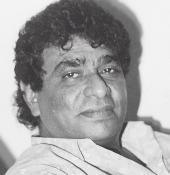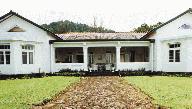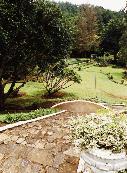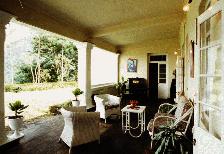




 That is exactly what Clarence Wijewardane did when he made his debut in show
business. His talent was rare, his art of reaching out to audiences was
incredible and the humility he displayed even when he reached the pinnacle
speaks volumes for the unique human being Clarence Wijewardane was, right to the
end of his illustrious career. He strode the Sinhala pop scene as the
undisputed King and dominated the music world as a legend in our times. Even as
he became a celebrity, loved and revered through the length and breadth of this
country and outside, he never lost the common touch. The void created by his
departure can never be filled because men like Clarence come into this world
only but once.
That is exactly what Clarence Wijewardane did when he made his debut in show
business. His talent was rare, his art of reaching out to audiences was
incredible and the humility he displayed even when he reached the pinnacle
speaks volumes for the unique human being Clarence Wijewardane was, right to the
end of his illustrious career. He strode the Sinhala pop scene as the
undisputed King and dominated the music world as a legend in our times. Even as
he became a celebrity, loved and revered through the length and breadth of this
country and outside, he never lost the common touch. The void created by his
departure can never be filled because men like Clarence come into this world
only but once.
My first encounter with Clarence was way back in 1967 when I was living in Ratnapura, representing Lever Brothers (Ceylon) Limited. Late one night, when I was about to get into my car after visiting a friend, a young man walked up to me and introduced himself as Clarence Wijewardane. After several futile attempts to meet me, divine providence, as he put it, brought us together on that memorable night.
The Clarence that I met that night was a disillusioned young man with an unaccomplished dream and a history of dismal failures to transform his cherished dream to a reality. He said he was a composer of several songs and wanted my help to embark on a musical career. All he wanted from me was my help and this he wanted desperately. Listening to him, what struck me forcefully was the confidence he had in me, a complete stranger. He went on narrating his story just as he had done to several others before me. His story about being a composer did not impress me but what really galvanized me into action was his sincerity of purpose and the stark reality that here was a young man who was desperately in search of someone who would believe his story and respond to his need.
Before he could even finish relating his story I responded with the words he was wanting to hear "Alright, I will do everything I can for you" and with those words I gave my consent to launch a mega star. With me in the background and my assurance that I would make him a superstar, the best in Clarence emerged ... a talent that propelled Clarence to the top. His brand of music was so infectious that it spread like an epidemic through the length and breadth of this country, even to the most remote part of the deep rural village where his songs were played, sung, hummed or whistled. He brought joy and happiness through his music to millions of music lovers in Sri Lanka and abroad who acknowledged him as the undisputed King of Sinhala Pop. Song after song that Clarence composed was a masterpiece and Clarence Wijewardane became a household word ... The brand of music that originated from the maestro was as unique as the priceless gems that were unearthed in his home town - Ratnapura. Besides me, there were two other Coreas who figured prominently in promoting Clarence, one, being Vernon and the other, Vijaya. When Clarence performed in New York, yet another Corea, Ravi, my nephew, musically backed him and these little incidents he would relate to me with a deep sense of gratitude to all of us.
Clarence never did believe, in the initial and difficult stages of forming the Moonstones that he would become so popular in so short a time. Even when I used to tell him that someday I would make him a superstar he would laugh it off because that was unthinkable to a young man who hadn't even made his public debut! Grateful as he was for the help that my wife and I extended to him in our own small way, Clarence composed two songs for our two daughters, Ramani and Dilhani. He derived an enormous satisfaction out of composing these two songs, perhaps knowing that my wife and I were so pleased with them.
Shortly after the Moonstones started performing in public, Clarence's mother, firm in her belief that man cannot live by music alone pleaded with me to settle him down to a stable job. My brother-in-law, Stanley William, magnanimously recruited Clarence as a creeper at Penrith Estate, Puwakpitiya, their family inheritance. Clarence himself was the first to realise that he was a total misfit in a job that had nothing to do with music. His career as a creeper was short-lived and I had to convince his mother that Clarence and music could not be taken apart. One could sense that every nerve and fibre in his being was yearning for music and Clarence's talent was a God-given gift to him. I finally convinced the dear old lady that what God had brought together no man must put asunder!
I find it hard, like everyone else to believe that the mercurial Clarence is no more in our midst. He will live through his music bringing boundless joy and happiness to more people for many more years to come.Annesley, his singing partner, Sheila his ever faithful wife and Amila, the apple of his eye are privileged to have shared more time with Clarence than anybody else. Thank God that we all had the good fortune of knowing a man who was by far, one of the most gifted musicians of our time. For me, it is an unforgettable experience getting to know Clarence Wijewardane when he was unknown and being a witness to his meteoric rise to fame. If one were to ask me what I found most impressive in Clarence, my answer would be his remarkable quality of never allowing fame and glory to spoil his kind and gentle ways.
The Goethe Institute Colombo presented Susanne Linke and Urs Dietrich in a rare programme of German Dance theatre.
Held at the Bishop's College Auditorium over the Christmas season it projected modern expressionist dance that dealt with human emotions.
Its theatricality centred on dance forms that had grown out of, but veered sharply away from the historical German tradition. Linke, whose amazingly supple body is used as a vehicle for conveying fear hope, hate love and desire did so with natural ease and great flexibility.
She has been in Sri Lanka before, performing here with one of Germany's best known companies - the Wuppertal Dance Ensemble.
Linke's dance techniques have been perfected by the work she did with the famed American dancer, Mary Wigman. She also studied at the Folkwang University of Essen where the exploration of abstract dance was said to have begun.Linke's movements are co-ordinated with a fluidity and grace. In Affectors Humanos, which depicted Vanity, Despair, Love and Fear, choreographed by the late reputed dancer Dore Hoyer, she danced to the music of Dimitri Wiatowitsch. A clothes - horse on stage provided the dancer with an amusing facility for discreet lightning changes of costume in full view of the audience. This helped the smooth flow of the sequences of a dance.
Dolor (Pain) which was a homage to Dore Hoyer was backed by Gustav Mahler's soulful music - "Ich bin der Welt abhanden gekommen," sung by Janet Baker and played by the New Philharmonic Orchestra
Linke's moving performance expressed emotion through free-flowing, ever-changing patterns where her body was used with artistry and skill. In the second part of the programme Linke danced with her partner, Urs Dietrich. There was passion - a dramatic intensity of images some of them sombre, presented with a deep concentration that reacted to a collage of music put together by Dietrich. It was highly evocative with nature sounds, Japanese Kodo drums and "Bach's Mass in B Minor Cuon Sancto Spiritu, sung and played by the chorus and Orchestra of St. Martin's-in-the-Fields Bodies now plain dark costumes, held at sharp angles and percussive and irregular phrases and then in light arcs were used to maximum advantage in portraying the theatrical aspects of finely woven pure dance.
However, through this seemingly extreme freedom of expression one could discern the discipline control and economy of style that characterizes modern dance and its abstractions. Disonances, silences, surges of harmony, light and darkness, backed the dancers in their exposition of emotion, as it moved to a poignant and dramatic climax.
Secluded in hillside tea plantations are bungalows recalling part of Sri Lanka's recent past. Royston Ellis and photographer Gemunu Amarasinghe set out to discover some of them in this monthly series...
There was a monkey crouched on its haunches lapping up water from the swimming pool. We watched it from the grand entrance steps climbing up from the gardens of the Kepitigalla Bungalow.
 Kepitigalla: a
simple one storey house
Kepitigalla: a
simple one storey house
Kepitigalla is a real plantation bungalow; not a
two-storied mansion but a simple one-storey house set in the charm of well kept
lawns. And it has a swimming pool. It is the pool which adds distinction to the
bungalow and, for the occupants not just the monkeys, must be pleasant for
relaxation.
Outside living is enjoyable at Kepitigalla, which is in the Kurunegala district, because it is at a lower elevation than mist-swept hill country bungalows. Kepitigalla is, in fact, a rubber, not tea plantation bungalow. It is bereft of the eccentricities of some of the more elaborately accoutered plantation homes.
It is near the village of Ankumbura, north of Kandy on the road to Matale. Kurunegala railway station is 32km away. Entrance to the bungalow is reached across the upper layer of lawns which are terraced down to the pool. A flight of granite steps leads up to the vividly white painted house. Its front is actually its back.
 Layers of terraced lawns lead down to the swimming pool
Layers of terraced lawns lead down to the swimming pool
The path diverts to
the right so visitors enter behind the servants' quarters through an anteroom
which serves as an office. This gives access to the dining room which spans the
width of the bungalow. Access is also possible at the room's opposite side by
double doors from the verandah which is itself flanked by the tiny house's two
wings.
Another lawn, crossed by a path of rough hewn stones, is on a plateau which overlooks the distant undulating landscape. Kepitigalla may not have tea, but it certainly has serenity.
One wing of the bungalow contains family rooms, with a loggia entrance at its side. The other wing, with access from the verandah, is for guests. Its architecture gives a hint of the unusual qualities of this otherwise rather plain looking bungalow.
There are pillars, as well as pillows, in the bedroom. They divide the long room and suggest a frivolous streak in the architect's style. It's easy to imagine how an interior designer could transform Kepitigalla's somewhat spartan simplicity into an avante-garde dwelling that makes a statement.
Perhaps the statement was made in the past for the room, with its faded blue stained concrete floor and sunny ambience, seems Mediterranean,.in concept. It has its own dedicated colonnaded verandah forming the side of the bungalow. This also serves as a passage to the bathroom since it is not en suite.
Another curiosity in a bungalow that is designed to be cool in tropical heat is a fireplace in the sitting room. This room has a bay window which adjoins the bay window of the bedroom in the family wing. Both bay windows overlook yet another lawn, with a sun dial at its centre and a park-bench type seat in the shade of a venerable tree.
There are 50 steps up from the lower lawn to the house and the view from the upper terrace is of a wood of mature trees that keep the real world at bay. They form a backdrop to the swimming pool and a perfect setting for picnics on a sunny day.
There is a date, 1940, etched into the wall of the swimming pool. It is a clue to the history of the bungalow which has utilitarian lines reflecting the practical mood of the 1930s. Triangular ventilators have been set with exactitude into the walls above the three-sided bay windows of the wings. The floors are of concrete and tiles, not lavish with the decadence of wood. The layout is carefully planned with each room leading to another, yet loggias are also provided for privacy.
 The tiled verandah
The tiled verandah
Kepitigalla adds variety to the canon of plantation bungalows that deserve preservation,
even if only as a record of changing plantation architecture through the
decades. It bridges the style from the colonial bungalow to the contemporary
one.
Continue to Plus page 4 - Shell shock for turtles
Return to the Plus contents page







Please send your comments and suggestions on this web site to
info@suntimes.is.lk or to
webmaster@infolabs.is.lk